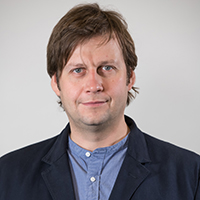Sergey V. Polyakov
National Inst of Standards & Technology, USAFor contributions using quantum properties of light for optical metrology, communication, and biosensing beyond classical limits.

Sergey Polyakov views challenges as puzzles, and he loves to solve puzzles. Whether the challenge is figuring out how to pursue a science career or related to a certain experiment, Sergey turns it into a solvable puzzle. An early dilemma was what to do after college. By attending graduate school, Sergey had made a definitive choice to pursue science for his career. Afterward, he was unsure of his next step: should he stay in academia? Move into the industry? To resolve the question, he turned to his colleagues, who helped him formulate an approach. In the end, he made cold calls to potential employers and wound up at California Institute of Technology (Caltech), USA in Jeff Kimble’s quantum optics group as a postdoc. Since then, he says that “I never know which puzzle I will face next, but once they’re cracked, I get a nice, warm feeling.”
Before joining the group at Caltech, Sergey’s focus was optics. His PhD was in optics from CREOL, University of Central Florida, USA, and he says that this has been highly influential throughout his career. Now, he can see parallels between the fast growth of optics at the turn of the century and how the field of quantum information is developing today. He remembers the fun he had “climbing the ladder of optics when it was developing” and feels a similar excitement with the quantum information field today. Just like optical engineering, quantum engineering increasingly requires a unique set of skills that take root in many disciplines, from physics and electrical engineering to material and computer sciences. Looking to the future, he believes that “quantum engineering [will mirror] what optics is now in terms of a new driver for people and a new direction for their careers.”
Sergey’s current work is on the quantum properties of weak or faint signals. He says that to some, the wide range of applications for the work could seem “scattered,” but at the foundation, everything comes down to measuring photons separately. He shares, “By taking light photon by photon, we see new interesting things in biology, quantum information, and classical communications powered by quantum optics.” However, what excites him most about the work is finding the best way to match a measurement technique to an application by pondering on the fundamental properties of both. This “under the hood” or behind-the-scenes work is what enables the technology to develop. He shares that while this may not be the most intriguing to those outside, it is fascinating for him.
At his current position at the National Institute of Standards and Technology (NIST), USA, Sergey supervises a group of students, postdocs, and other scientists on a daily basis. He also engages in collaborative work with fellow project leaders. At this stage, finding fruitful mentorship advice is rare. He recently had a unique opportunity to meet Barbara Goldstein who offered her advice through a leadership program. This experience has helped him recognize growth opportunities both professionally and personally.
His advice for young scientists is to seek advice from experts, respect from peers, and support from superiors. Sergey comments, “everybody needs their own encouragements and [motivations]…look deep inside yourself and see what motivates you the most.” He strives not to impose his personal ideas but to guide and support young scientists he works with however they need.
Photo Credit: Sergey Polyakov
Profile written by Samantha Hornback
